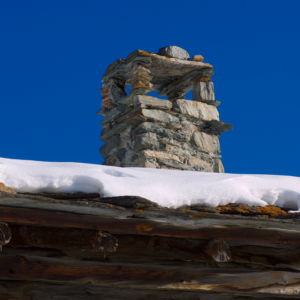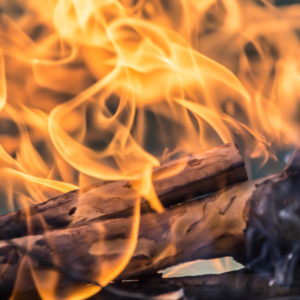Cold winter days can seem to drag on this time of year. That’s why it’s the perfect time to build cozy fires to counteract the long nights and winter chill. Unfortunately, if your chimney is cold – which is particularly likely if it’s on an exterior wall – it may be hard to get those fires going, then burning hot and clear.
Starting a fire when your chimney is cold can be a frustrating experience, but there are a few things you can do to make the process easier.
Why Won’t My Fire Start?
 There are a number of reasons it can be hard to get a fire going in a wood-burning fireplace. That said, if you’ve narrowed the cause down to chimney temperature, you’re well on the way to finding a solution. But understanding why the cold is an issue can help you get there.
There are a number of reasons it can be hard to get a fire going in a wood-burning fireplace. That said, if you’ve narrowed the cause down to chimney temperature, you’re well on the way to finding a solution. But understanding why the cold is an issue can help you get there.
When a chimney is cold, the air inside is dense and stagnant. Open the damper and down it rolls, right into your firebox where you’re trying to nurture that flame. The good news is that warm, less dense air from your fire will want to rise once you can get it started… The bad news? It’ll be easier for it to move into your room than fight against the cold air in your chimney.
Fighting Cold Air: How to Get Your Fires Going
So, how can you avoid smoke in your home and cold air smothering your flames? We’ve got tips.
Prime the Flue
One of the most effective ways to get a fire started when your chimney is cold is to begin with priming the flue. This involves creating a small, starter fire at the bottom of the chimney.
To do this, roll newspaper into a cone. Ignite it, then carefully hold it at the throat of the chimney. Newspaper burns quickly and easily, and it’ll create an intense stream of heat that rises and warms the air in your chimney as it goes. As a result, the air inside your chimney will be less dense, allowing smoke and heat to rise more easily.
Seal Out the Cold
If getting fires lit is a perennial problem, it might be time to consider upgrading to a top-sealing damper. This type of damper communicates its advantages in its name. It’s positioned at the top of your chimney and creates a tight seal, protecting the entire flue against precipitation, debris buildup, and critters that could damage your chimney system or create fire hazards.
It also helps keep cold air out, which means that when you’re ready to use your fireplace, you won’t have to fight a wall of cold air to do so.
Use Firewood Correctly
Another helpful tip? The firewood you use, as well as the way you stack it, can help you out when the weather is cold.
 First, make sure your firewood is nice and dry. You want the moisture level in your logs to be 15-25 percent. Try testing it with a moisture meter, or look for signs that it’s properly dried and seasoned: checking (cracks and splits), darkened edges, and a hollow knocking sound when struck together.
First, make sure your firewood is nice and dry. You want the moisture level in your logs to be 15-25 percent. Try testing it with a moisture meter, or look for signs that it’s properly dried and seasoned: checking (cracks and splits), darkened edges, and a hollow knocking sound when struck together.
How does this help you? Properly cured firewood burns more readily, cleanly, and efficiently. Your fire won’t have to work to burn off moisture if firewood is dry, so instead it uses its heat to benefit you. Seasoned, dry firewood won’t smolder. The fire will be less smoky and give greater heat output. As a result, it’ll also keep your flue more clear of harmful creosote build up and smoke will vent properly.
Second, stack your firewood strategically. It might seem counter intuitive, but put the largest pieces at the base of your stack and make a pyramid with pieces that get smaller near the top, ending with your kindling. The kindling with light quickly, warming the aiir near your chimney and serving as a way to help prime the flue.
Leave Ash Behind
Finally, leave some wood ash in the firebox. Your firewood may be reduced to ash, but that doesn’t mean its usefulness is spent. Leave an ash bed of about two inches in place to insulate your fireplace and aid in the starting of your next fire.
Just remember – when the layer of ash is inhibiting rather than helping your efforts by restricting airflow to your logs, it’s time to take the ash level down a bit. And at the end of the season it’s best to clear ash out completely until the next fall. Just be sure to scoop safely – ash should be cool, should be scooped with a fireproof shovel into a metal bin with a tight lid, and be removed to a safe distance outside of your home.
Still Having Trouble? Talk With Our Experts
Still struggling to get a strong flame going? It might be time to seek the advice of a professional.
A well-qualified chimney sweep offers thorough inspections, well-informed expert advice, and the skills necessary to make upgrades and provide maintenance that is vital to the efficiency and long-term proper functioning of your chimney system. Give our friendly, qualified sweeps a call at 434-481-3796 today – or reach out online – to see how we can serve you best!
